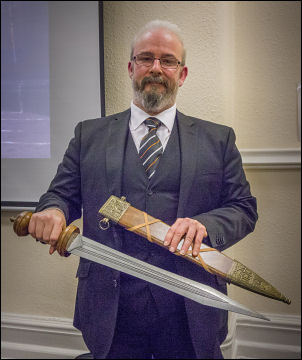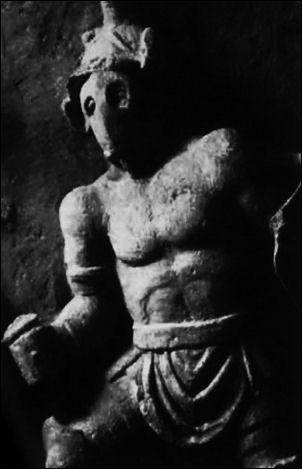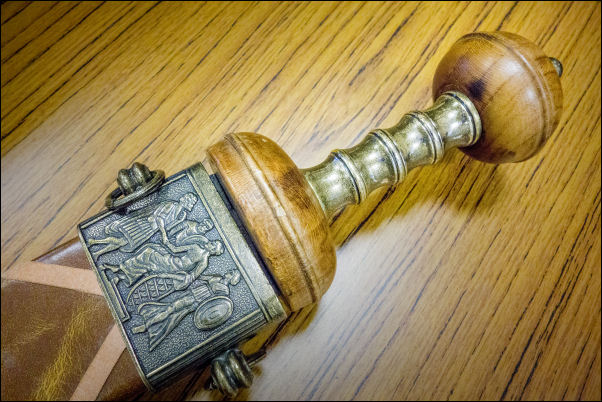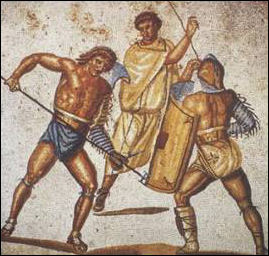|
Tue
09 Feb 2016
David Casserly - Gladiator –
Life and Death in the Arena. |
|
|
|
David made
a welcome return to the society following his successful talk in
2015. This time he spoke about gladiators.
Gladiators’
originated with the Etruscans who, as a way of honouring the
dead, held fights between men. By the time of the Romans,
gladiators were a status symbol and it was a question of how
many gladiators you had to honour the dead. |

David Casserly and Gladius |
|
Julius
Caesar owned 320 pairs of gladiators to honour his father’s
death, 20 years after he had died.
Gladiator
shows were very popular and Roman governors put them on to keep
the population happy. Early gladiators included slaves and
prisoners of war but not all them were condemned to die. Some
gladiators fought for money, probably to clear debts.
David
described life at the training school, the Ludos. Trainers were
probably retired gladiators and the students received the best
medical treatment. Not surprising, as there was much prestige
and money at stake when they fought. |
 |
|
|

Gladius |
|
Various types of
gladiators were produced, including hunters of animals,
challengers, charioteers and chasers and were equipped with as
varied a selection of weaponry and body armour.
At the
arena, and provincial games could last for 10 days, there was a
specific daily timetable of events. Morning saw the beast hunt,
the more exotic the better and more popular with the spectators.
|
|
|
 |
|
Noon day spectacle involved
executions, by executioners and beasts, of convicted criminals.
Afternoons started with warm up
events such as mock battles and charioteers. These led to fights
with matched pairs and culminating in the best matched pairs
squaring up to each other.
David’s
compelling talk described the brutality of the arena but also
the specific rituals of the show and how it reflected wider
Roman society.
Peter
Robinson |

A retiarius stabs at a secutor with his trident in this mosaic
from the villa at Nennig, Germany, c. 2nd–3rd century AD. |